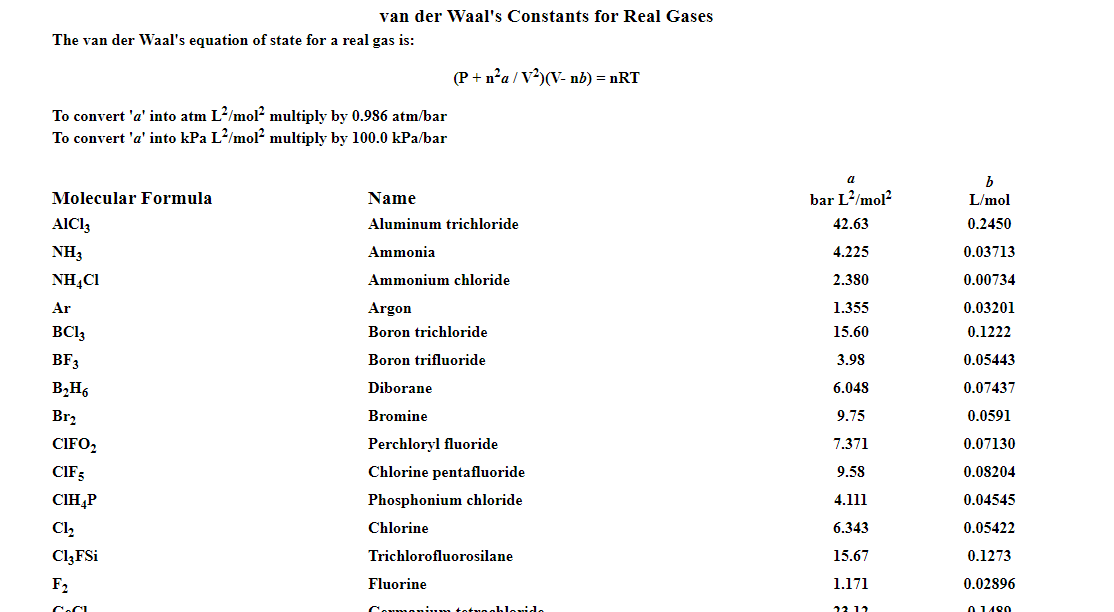http://www2.ucdsb.on.ca/tiss/stretton/database/van_der_waals_constants.html
I don't understand how to calculate exact constant - b, given only the chemical formula and nothing else.
Q: T || F --- the following molecules are arranged from largest to smallest b van der Waals constant per mol
C2F4, C2H6O, Cl2, Ne
I know that the Van der Waals eq. is a better description of the behavior of real gases and that it is $$ [P + a (n/V)^2] (V/n - b) = RT $$
and that b represents the correction term for the size of the atoms/molecules [=] "units of " volume/mol
I just don't understand how to calculate exact b, given only the chemical formula and nothing else.
After looking at the website could reason a bit through electronegativity that C2F4, must be the largest --- am I supposed to plug in fixed values for P, V and T.
like give P, V, and T any values? for all calculations?


